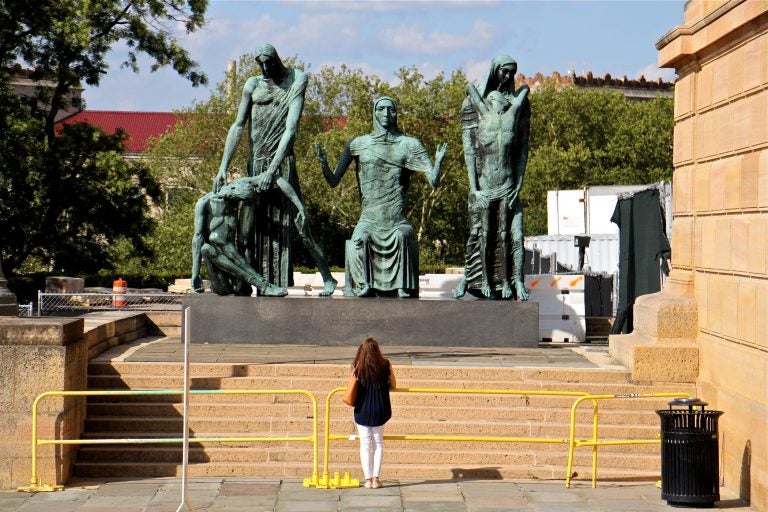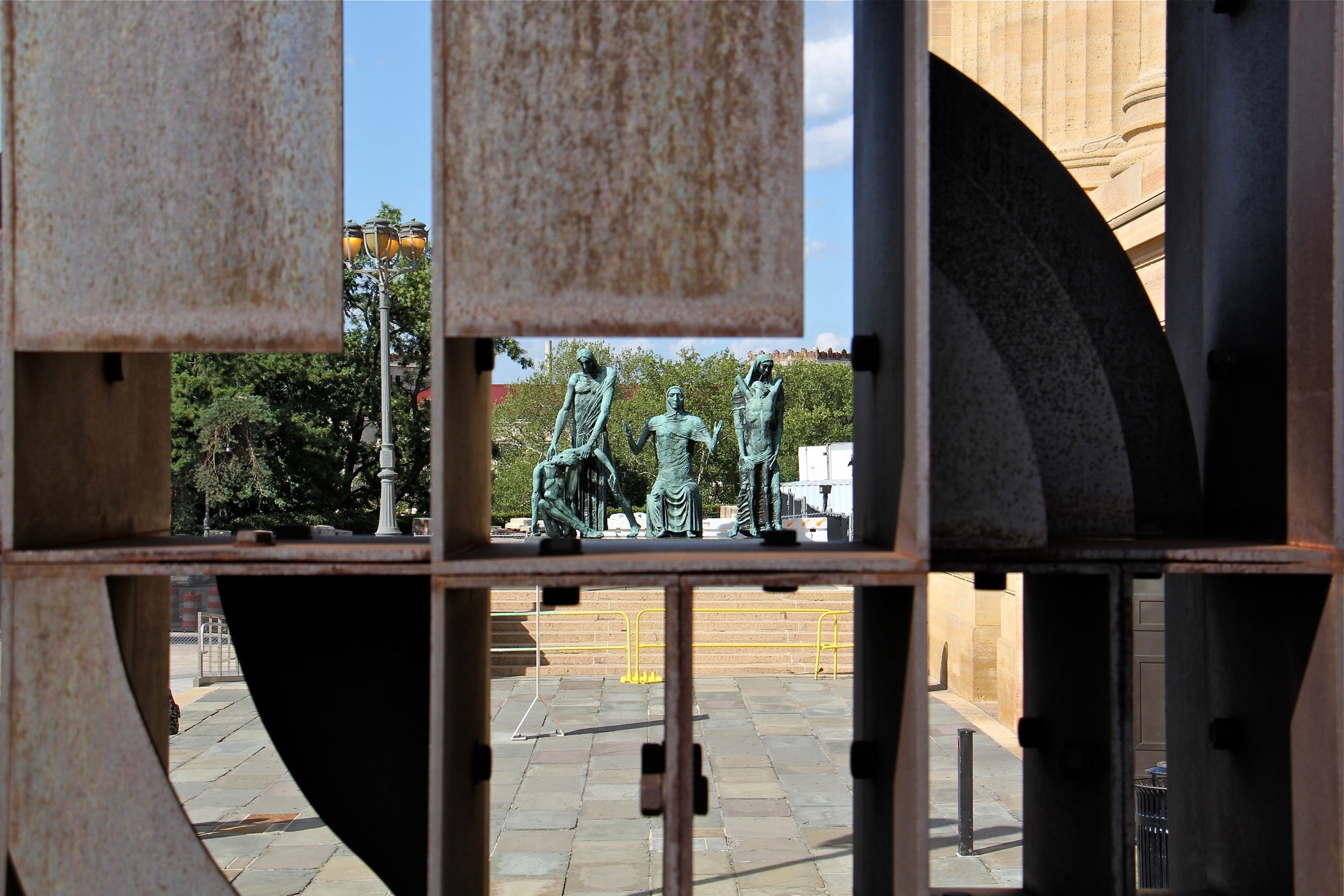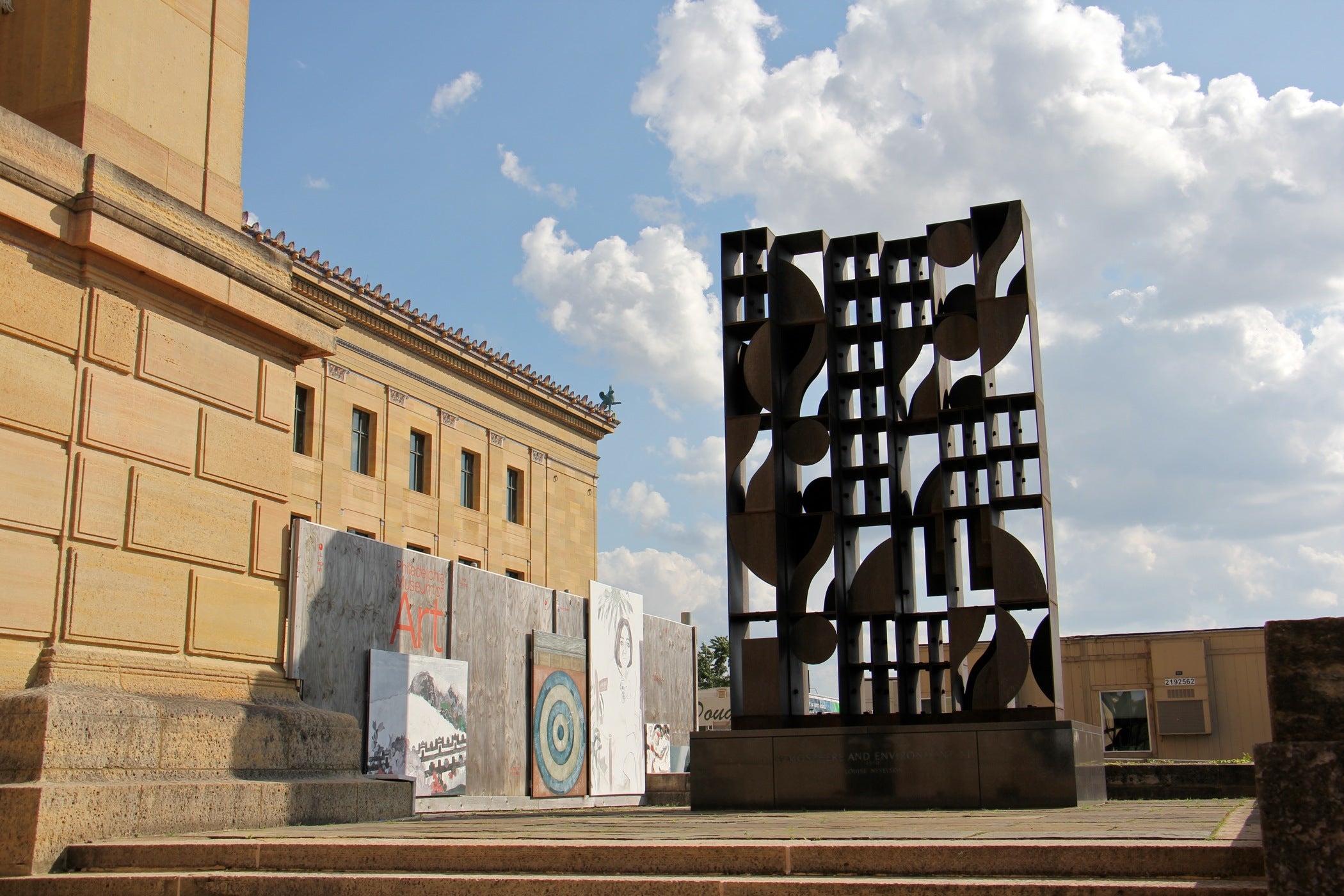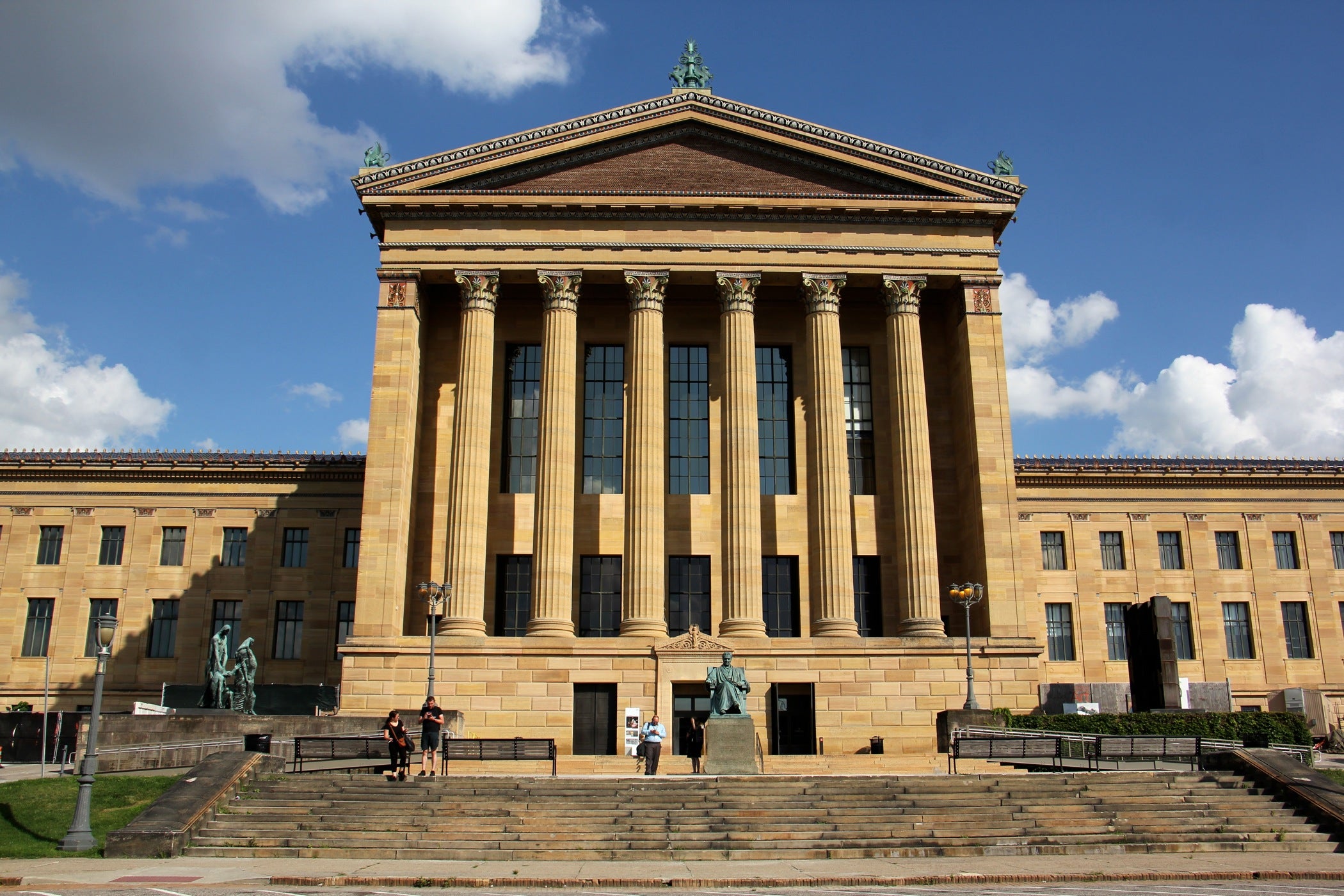Two Philadelphia Art Museum sculptures are moving across town
Monumental sculptures at one of the entrances of the Philadelphia Museum of Art will be removed to make room for building renovations by Frank Gehry.
Listen 1:44
A museum patron pauses at the west entrance of the Philadelphia Museum of Art to look at "Social Consciousness" by Jacob Epstein. The monumental sculpture will be moved to the University of Pennsylvania campus. (Emma Lee/WHYY)
Anyone who uses the underground parking garage to enter the west side entrance of the Philadelphia Museum of Art – not the more familiar Rocky Steps of the front entrance – will certainly have noticed “Atmosphere and Environment,” an 18-foot steel panel comprised of geometric shapes, by artist Louise Nevelson. It’s been there since 1973.
Nearby is “Social Consciousness,” a trio of dour-looking, allegorical figures 12 feet tall by Jacob Epstein, representing compassion, destiny and death. They have stood sentry at the west side entrance since 1955.
Although closely associated with the museum, the two sculptures are actually the property of the Association for Public Art, which will unmoor them from their pedestals to begin a journey to the University of Pennsylvania on Monday.
A major underground expansion of the Art Museum, designed by architect Frank Gehry prompted this move, which will involve temporarily closing the west entrance.

“Over the years, our visitors have grown accustomed to being greeted by these imposing sculptures, so the removal of the works is a signal of the many changes taking place in the main building,” said Philadelphia Art Museum CEO Timothy Rub in a statement. “The Nevelson and Epstein works will find news homes just across the river where they can continue to be admired by the public.”
The university entered into a 99-year lease agreement with the Association for Public Art to house the works. The campus already has a collection of 57 outdoor sculptures, perhaps most notably a Robert Indiana LOVE sculpture, Claes Oldenburg’s “Broken Button,” and Tony Smith’s “We Lost.”
“We have a wonderful selection of artists, and I think these two sculptures will fit in very nicely,” said university curator Lynn Marsden-Atlass. “We spent a long time doing site studies to find appropriate locations for the works.”

Their new homes will be very different from their previous perch on top of the art museum hill, overlooking a parking lot, a bus turnaround, and the I-76 freeway.
The Nevelson steel panel will live in Shoemaker Green, a relatively new park next to the Franklin Field athletic stadium. It is a very public location, plainly visible by pedestrians, drivers on 33rd Street, and the many thousands of visitors to the stadium, particularly during Penn Relays.
Because of its size and location, the Nevelson panel will be seen against both a natural background and a built environment, depending on from which direction you are looking.
“Her pieces are very much constructed as an architectural abstraction,” Marsden-Atlass said.

On the other hand, “Social Consciousness” will be seen in a more intimate space, the somewhat obscure Memorial Garden Walk next to the main Van Pelt Library.
“You’ll come across it in very much a natural setting,” Marsden-Atlass said. “There are trees and a memorial garden. I think it’s well-sited for that particular piece.”
The piece was originally intended to be in a bucolic setting. Commissioned by the Association for Public Art (in 1954 called the Fairmount Park Art Association) Epstein created his piece for the riverbank park along the Schuylkill at Kelly Drive.
“While Epstein described aspects of this work as representing ‘gladness and optimism,’ the sculpture bears solemn witness to the moral underpinnings of the society he was asked to characterize,” wrote the director of the Association for Public Art, Penny Balkin-Bach, in her book “Public Art in Philadelphia” (1992).
However, Epstein made “Social Conscious” so large that it would not fit into its planned site. The trio had to be placed downstream, to the concrete and asphalt location at the top of the art museum’s access road.
The new site at the university garden may better suit the artist’s intention.
Both sculptures will go into temporary storage for a week or two, before being lifted by crane onto their new pedestals. Marsden-Atlass hopes to have them in place by the end of the month.
WHYY is your source for fact-based, in-depth journalism and information. As a nonprofit organization, we rely on financial support from readers like you. Please give today.





